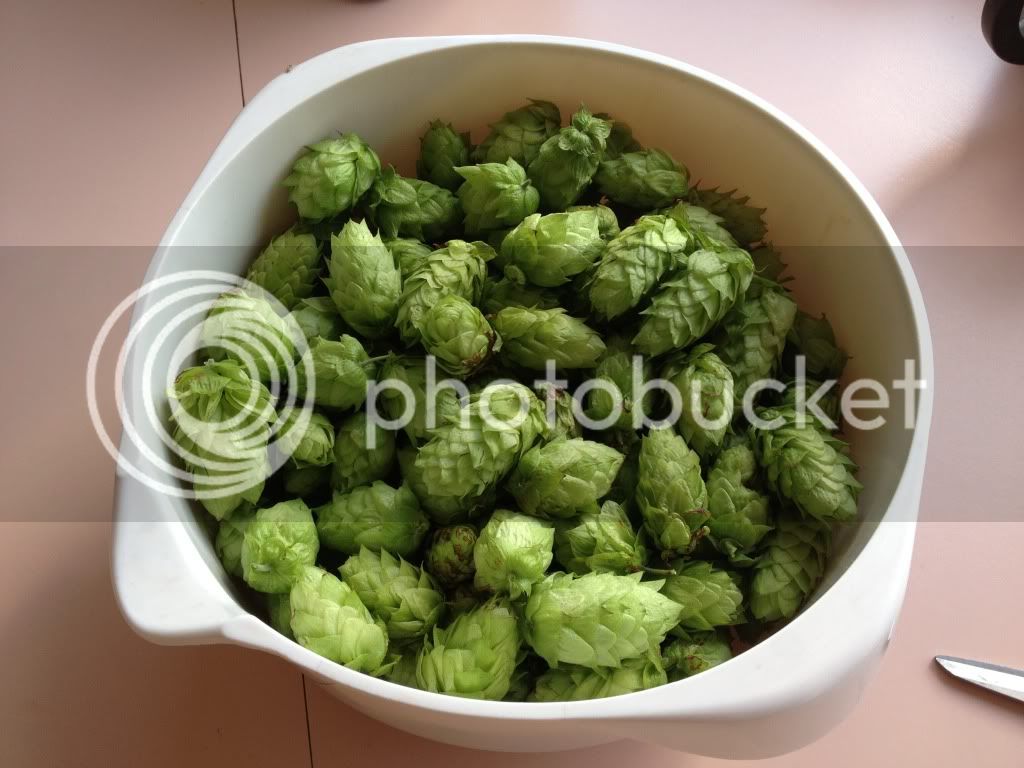Well compared to last season's crop, I've increased my yield by 633%
You probably should grow them outside.

Well compared to last season's crop, I've increased my yield by 633%
Funny you should say that as I was starting to think the same thing.You probably should grow them outside.Well compared to last season's crop, I've increased my yield by 633%





Hi guys,
Got a noob hop drying question here.
As you can see above, my hop drying rack is pathetically lo-tech and completely worth laughing at, so go ahead.

I've dried a bunch out successfully (up to about 100g now), but as I was cleaning up last night, I noticed a shitload of the "yellow powder" from the dried hops had settled on my workbench (old kitchen bench). Wiping it up with a damp sponge then smelling the sponge, it was pretty obvious there was more aroma in the sponge than dried hops!
I'm thinking of putting a tray underneath, catching that powder and pour into bag with dried hops. but if anyone advises against this and has got any better suggestions short of "get a dehydrator" I'm all ears.
Cheers in advance
EDIT... pic didn't work, fixing now.
Hi guys,
Got a noob hop drying question here.
I noticed a shitload of the "yellow powder" from the dried hops had settled on my workbench
I'm thinking of putting a tray underneath, catching that powder and pour into bag with dried hops. but if anyone advises against this
OK i harvested about 400g of cascade some of the cones looked slightly brown/rotted at the tip on opening it there was a little weevel/grub in it!
What is the bastard and how do you manage it i had a few cones with the grubs
cheers
Yeah it was tempting to dip the sponge in a schooner. it smelt delicious.The yellow powder is the Lupulin glandular resinous powder. When the cones are not that ripe it is a pale yellow colour, when ripe it is more of a golden or orange colour. It is why we grow and use hops. It is the stuff that has the bitterness, aroma and flavour. The green leafy bits aren't really much use to the brewer other than catching trub.
Yes by all means, capture the powder and bag it with your hops (or sprinkle a bit into a glass of beer...), afterall it is IS the good stuff we are after.
Yeah it was tempting to dip the sponge in a schooner. it smelt delicious.
Thanks for the simple answer, malted.
According to the hopunion-variety-databook.pdf (Which I presume I downloaded from their website) the colour and quantity of Lupulin is dependent on the hop variety.The yellow powder is the Lupulin glandular resinous powder. When the cones are not that ripe it is a pale yellow colour, when ripe it is more of a golden or orange colour. It is why we grow and use hops. It is the stuff that has the bitterness, aroma and flavour.
Some beer-gardens, pubs and micro's have hops growing for ornamental-type-purposes, glass-hopping is also a way to 'improve' on one of the beers that you think might need a bit more hoppy-goodness.Glass hopping is just another way to enjoy your hops and maybe get an idea of the flavour contribution they make. 3-4 cones will make quite a difference. Do it for ***** and giggles.
Dang, it appears you can't download it anymore. The current variety book on their webpage does not mention lupulin colour. It mentions total yield and total oils.According to the hopunion-variety-databook.pdf (Which I presume I downloaded from their website) the colour and quantity of Lupulin is dependent on the hop variety.